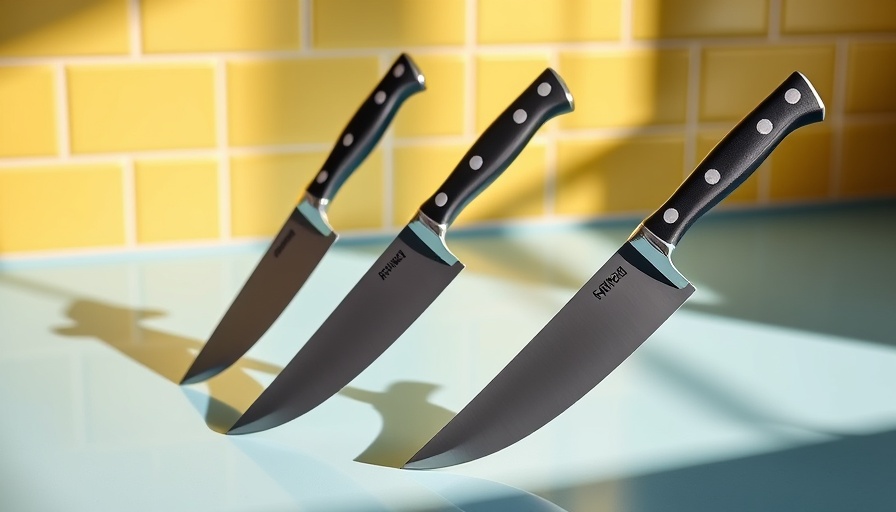
Investing in the Right Knife: Is It Worth the Cost?
For novice cooks and seasoned chefs alike, choosing the right kitchen knife can be a daunting task. With options spanning from budget-friendly $50 knives to premium choices exceeding $300, finding the balance between performance and price is essential. The real beauty of a knife lies not just in its initial purchase price but in how it stands the test of time. That's why understanding the costs associated with knife manufacturing can empower your buying decision.
The Importance of Steel Quality
At the heart of every kitchen knife's performance lies the type of steel used in its construction. The most common materials for knife manufacturing include stainless steel and high-carbon steel. Stainless steel might be the initial go-to for many due to its rust resistance, but those who require longevity and consistent sharpness often gravitate towards high-carbon steel knives. High-carbon steels contain at least 0.6% carbon, which greatly enhances their ability to maintain sharp edges. Although susceptible to rust if not cared for properly, these knives often prove to be a worthwhile investment for serious cooks.
Understanding Edge Retention
When considering how much to spend on a kitchen knife, edge retention is a critical factor. A high-quality blade can be sharpened multiple times, preserving its cutting capabilities over years. In contrast, lower-end knives may chip or dull quickly, leading consumers to waste money on frequent replacements. For those who frequently cook or prepare meals, investing in a knife that retains its edge even after extensive use can save time and money in the long run.
Price vs. Performance: Finding the Right Balance
Price alone doesn’t guarantee quality. There are numerous affordable knives on the market that can perform on par with mid-range knives. However, as knives become more expensive, they typically offer better materials, craftsmanship, and longevity. As observed in the industry, brands like Wüsthof and Shun are popular not only for their price point but also for their excellent reputation for durability and performance. Understanding your cooking habits, how often you will use the knife, and how much maintenance you’re willing to do can help you decide whether to splurge or save when selecting a knife for your kitchen.
Making an Informed Purchase
Before making a knife purchase, consider what you truly need. Are you a casual cook, or do you need a tool that can handle hearty chopping and delicate slicing? Given the ever-expanding array of knife brands, there's likely a perfect fit for every budget and cooking style. Investing in a quality knife can transform not just your cooking experience but also your prospects in the culinary world.
Final Thoughts on Your Knife Investment
Choosing the right kitchen knife is much like choosing the right investment—it's essential to think long-term. Look beyond the sticker price and consider how much value the knife will bring to your cooking journey. For anyone serious about honing their culinary skills, a well-chosen knife is not just an expense; it’s an investment in your kitchen arsenal.
 Add Row
Add Row  Add
Add 




Write A Comment